
The best way to keep your motorhome or caravan’s water tank clean.
2 January, 2018 | Update: 04/06/2024
A clean water tank is indispensable when you are on the road with your camper or caravan. You want to be able to wash your hands or rinse a plate quickly and get back on your way. Even though drinking water from the tank is not recommended, it is still very important that you not only change the water regularly, but also clean the tank and the water pipes properly. This prevents all kinds of nasty bacteria. We asked water expert Geert de Bekker to tell us exactly how to clean a water tank.
Bacteria in the water tank
The water quality in your caravan or motorhome’s water tank can deteriorate rapidly. High summer temperatures are often the culprit, allowing harmful bacteria and fungi to develop. Because the water is stagnant in an enclosed space, bacteria have free rein to multiply rapidly. They nestle against the inner wall of the tank and in the water pipes. If you don’t clean the water tank and pipes regularly, you will have a higher chance of legionella and other bacteria in your water.
Even if you don’t drink the water, you could still become infected with these bacteria. When showering for example, or when rinsing fruit and vegetables, or because you inhale the water as vapour. This does not have to mean that you will get sick, but the chance exists, especially for people with a weak immune system. These people have a greater risk of complications with certain bacteria. A clean tank and clean water prevent these kinds of dangerous bacteria from developing.
How often should you clean the water tank?
Running the taps every few days and regularly filling the tank with fresh water is not enough. Especially when camping in the heat of Southern Europe. For proper maintenance of the water tank, there are several ways to ‘disinfect’ water. That’s a good first step, but it won’t clean your water tank. You know that slippery layer on the inside of pipes or your shower drain? That’s biofilm. Biofilm and other bacteria stick to the edges and you can’t get rid of them just by rinsing. You should thoroughly clean your water tank at least twice a year. Before you go on holiday and before your caravan or motorhome goes back into storage.
How do you clean the fresh water tank of your motorhome or caravan?
Here is a step-by-step plan:
- Drain the water pipes and boiler. The drain valve can be found near your boiler. Close the faucets again when the pipes are empty.
- Empty the water tank and then fill it with water and cleansing agents. To clean the water tank, you could use a cleansing agents such as, for example, Steradent. How much Steradent do you use in a water tank? Use 1 Steradent tablet per 1 litre of hot water. Scrub the tank clean with a brush or sponge.
- Rinse the tank and then fill it completely with the same cleaning agent.
- Clean the water pipes by pumping the water with cleansing agent through the hoses. Close the taps and allow the pipes to soak for several hours. Then drain the pipes and the water tank completely. Using an airbed pump, blow them out (do NOT use your mouth, because that will introduce new bacteria) and then rinse them thoroughly.
- If you are cleaning the fresh water tank before putting the motorhome or caravan into storage, then complete the task by drying the tank with a clean towel.
If your water tank is clean before you go on holiday, you’ll want to keep it that way.
How do you keep your water tank clean on the road?
- Refresh the (drinking) water as often as possible – at least every three days.
- Don’t use that much water? Then fill the water tank halfway. A level meter can show you how full your water tank is.
- Wash your hands before filling the water tank.
- Always use a clean water hose to refill water. This prevents bacteria from getting into your water tank via the hose. Of course your campsite or motorhome site may not have a clean hose, so make sure you have a watering can with you that you only use to refill with clean water.
- Always use the faucet for filling water, and do not let your hose make contact with the faucet.
- Use an ecological washing-up or shower product sparingly. It is better for the environment, the location where you may drain the grey water, and also for the pipes and tank. More and more campsites are using ecological cleansing agents and will certainly appreciate this.
How do you clean the grey water tank?
Naturally, it is also important to clean the grey water tank properly. First of all, make sure that you empty the tank regularly. Empty it at a sewer pit for grey water tanks and make sure that the tank is all the way empty. After cleaning the fresh water tank, drain the used water with cleansing agents to the grey water tank. Drive around the block to distribute the mixture properly throughout the tank and then allow the water to stand for a few hours. Empty the tank. If you would like to clean the grey water tank at another time on its own, you can do so using Steradent or a cleansing agent specifically intended for the grey water tank.
A clean water tank all year round
Cleaning the water tank is a bit of a job. So is there a way to get a clean water tank with less work? After all, what camping enthusiast fancies spending all their time on cleaning their water tank? Geert de Bekker, who has enjoyed camping for almost 50 years and has 10 years experience in ozone technology, has gained a lot of knowledge about everything that has to do with clean and safe water. His recommendation is Tank-O3. Tank-O3 is a small built-in system for a motorhome or caravan’s water tank. This system works on 12 and 24 Volt.
The system uses an electrical current to create a chemical reaction in the water converting oxygen in the water (O2) to ozone (O3). Ozone is an extremely strong, odourless and tasteless oxidant that ensures that the water in the tank, but also the tank itself, remains completely free of bacteria. Because you clean the pipes before using the device, the pipes also stay clean and safe. As long as the system is on continuously throughout the season, all you have to do is top it up with water.
Cleaning products for a water tank
There are various water tank cleaning products in different price ranges, all of which work in their own way. Some can be used during your holidays; others are more suitable to clean the water tank after winter storage. When choosing the best cleaning agent for your water tank, there are a few things to keep in mind:
- Do you want to use a regular product or an industrial-grade one?
- Will you choose an organic product or is that not a priority for you?
- Check if the cleaning agent leaves a certain smell or taste. That can be unpleasant.
- If you have a water heater or boiler, make sure you choose a product that is compatible.
- Does the cleaning agent also remove limescale? Or do you need an extra product for that?
Do not drink from your water tank
Because you never know to what extent the water hoses or the tank are contaminated, it is safer not to drink the water from the tank. The most unpredictable part of the water quality is in the hoses. These are difficult to check for contamination and are precisely the areas that are most susceptible. Moreover, tap water quality can vary depending on your destination. All in all, it is much preferable to drink bottled water. If you really don’t have any other water at hand than the water from the tank, make sure that you always let the water boil for at least three minutes. That’s the only way to kill harmful bacteria.
If you are buying an older second-hand caravan or motorhome and you’re not convinced that the water tank has been properly maintained? Then it is wise to buy a new water tank and possibly new pipes. They come in different shapes and sizes, built-in or loose and with or without wheels.
More tips on cleaning your caravan, motorhome or tent? Get them here.
Don’t want to miss any camping news? Then sign up for our Eurocampings newsletter!


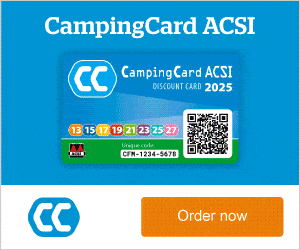
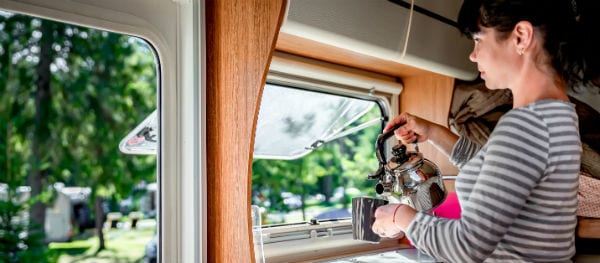
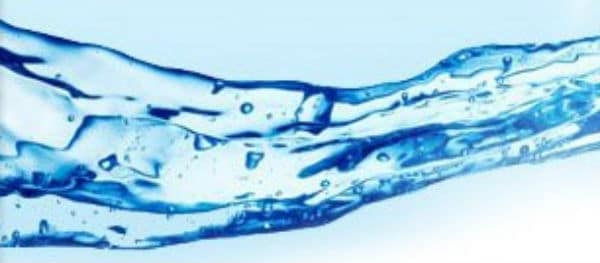
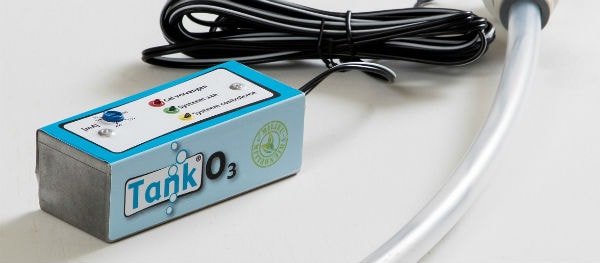
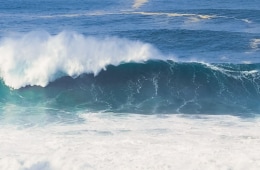
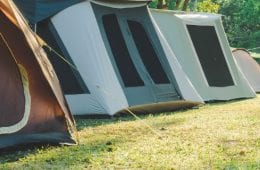
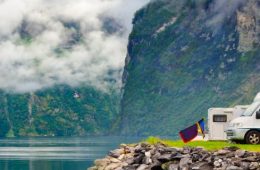





26 Comments
I have a small touring caravan and my tank is a 50 litre rolling barrel which I fill at the drinking water tap on the site. There is no internal tank. How am I supposed to scrub that out? The access holes are about 6cm across so too small to access with a hand All I can hope to do is use the steradent tablets in the rinsed out tank with some clean water and then pump it through to the pipes and later rinse. Any one got a better idea?
We use Puriclean to sterilise the tank and pipes then add Aquasol to each tank of water. Also use a separate container for drinking water which we fill from onsite drinking water taps.
Thanks For Sharing this Blog!!
Interesting article but our problem is that we filled our take with a non potable hose and didn’t realise. We couldn’t understand why the water tasted bad.
Once we realised the cause we’ve flushed and flushed out the tank but can’t get rid of the last taint.
Any suggestions. The list of contaminants from a non potable hose is horrendous.
I would exercise caution following the use of an Ozone generator in a caravan or motorhome, in my experience as a water engineer my main issue was always with pipe cleanliness, especially the issues already pointed out by some well informed readers on this thread.
We have always drank water from out Motorhome onboard tank for the last 25 years. However I have always fitted a filtration system.
For many years I used the Nature-Pure filter system but due to the increasing costs of replacement canisters I have changed to the 3 M HF10 filter which gives similar protection.
Simply use either pure lemon juice or vinegar (I prefer lemon juice as no residual taste) you simply need an acid to rid yourself of alkaline (build up in the tank & pipes)
1. Good dose of lemon juice depending on size of tank.
2. Flush through the system thoroughly.
3. Refill with clean water.
Simple
I read about the use of Milton and bleach and the problems it can cause. The manufacturers of our boiler recommend using citric acid which is tasteless and does not cause any problems with the boiler. This can be bought in powder form from Amazon. I will be using this to clean our water tanks as it is inexpensive and safe.
Complete and utter rubbish. You are actually encouraging people to buy bottled water which may have been shipped half way across Europe at a huge cost to the environment. People may even be camping in the mountains with fabulous local tap water and then buying bottles from another country! Ignore this rubbish and just clean out the system using Milton and refill regularly.
We have spent three years caravaning in Australia, Milton was used on a regular basis to keep pipes and tank sweet, yes there is sometimes a taste of Milton but we were safe. In a country where water is more important than fuel, both were topped up at a start of a day’s travel . As a retired clean water employee, I would be more concerned with the source of the water, as it leaves a high pressure, animal infestations disintegrate at atmospheric pressure, so careful what you drink!
It is well known that the use of Miltons can seriously damage your water heater and other metals in the water system – so why not use the recommended products also vinegar can be a good aid. All the best George.
Yes. If you put a little Milton on to some stainless steel and leave it you will soon understand what it does to the inside of you stainless steel water heater. You won’t use it again when you have seen that.
Absolutely agree with Kevin, suggesting buying bottled water is so wrong for many different reasons.
Also, using these pages, which we campers believe to be about sharing help and advice, to advertise a product is very disappointing – shame on you ASCI!
Thanks very much, George T and others for info about Miltons. I was about to flush out my camper, it having stood sadly unused for a couple of months now, with Milton but will now look into vinegar or citric acid options. Thank you.
Is this an advert?
We emptied the water tank on our motorhome when we took it off the road for winter. We flushed it through with Puriclean 5weeks ago and went way in it for a rew days and it was fine. We filled it fresh from home before going away last weekend but the water was tainted. We flushed it through thrice but taste just the same. Any ideas on how to solve this problem would be much appreciated. Thank you.
Your most likely issue will be your hose pipe. Always use a food grade hose.
Your most likely issue will be your hose pipe. Always use a food grade hose to fill your tank.
Milton
Certainly looks and reads like an advert.
€399 for the only recommended ‘fix’ in the article.
I can’t fill my water tank
Great advice about water treatment
Thank you, Charles!
How do you clean the pipes before installing your gadget?
How to clean all the other parts of the system?
How is your ‘biofilm’ removed?
Rubbish article of no practical use!
What chemical should I put in my RV water tank to make the water safe ?
Hi Pat,
I would advise to inquire at a campsite shop.
Considerations in the selection process include whether the cleaning agent leaves a scent or not, whether it is an ecological cleaning agent and whether it also removes limescale.
Kind regards,
Marieke
Am fairly new to motorhoming and I am keen to pick up tips from experienced campers